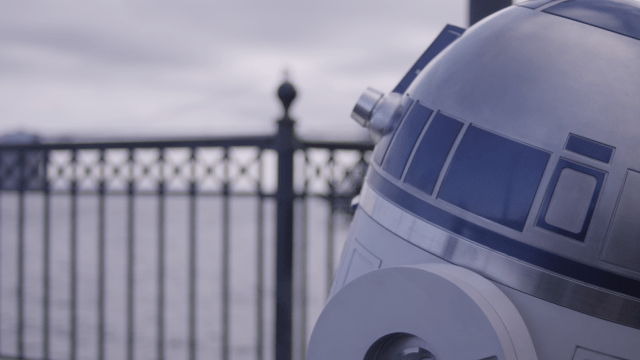The long rectangles of San Francisco’s famous piers gave the city a blocky, geometric border with the Bay over a century ago. Now these abandoned remnants of the Barbary Coast are being rejuvenated by companies like software giant Autodesk, whose Pier 9 Workshop is so experimental that it feels like science fiction.
On an early afternoon in mid-March, I walked between refurbished buildings, tennis courts, and carefully-tended lozenges of grassy turf to reach Pier 9. As I crossed into the cool interior below a high, arched roof, I couldn’t help but recall the history of this area. In the nineteenth century, this place would have been muddy and cold, the heart of a newly-hatched gold rush city, surrounded by bars and brothels and get-rich-quick schemers. Sailors would have swarmed the now-immaculate pier with its walls of windows, unloading everything from dynamite and animals, to corrugated iron siding for instant houses.
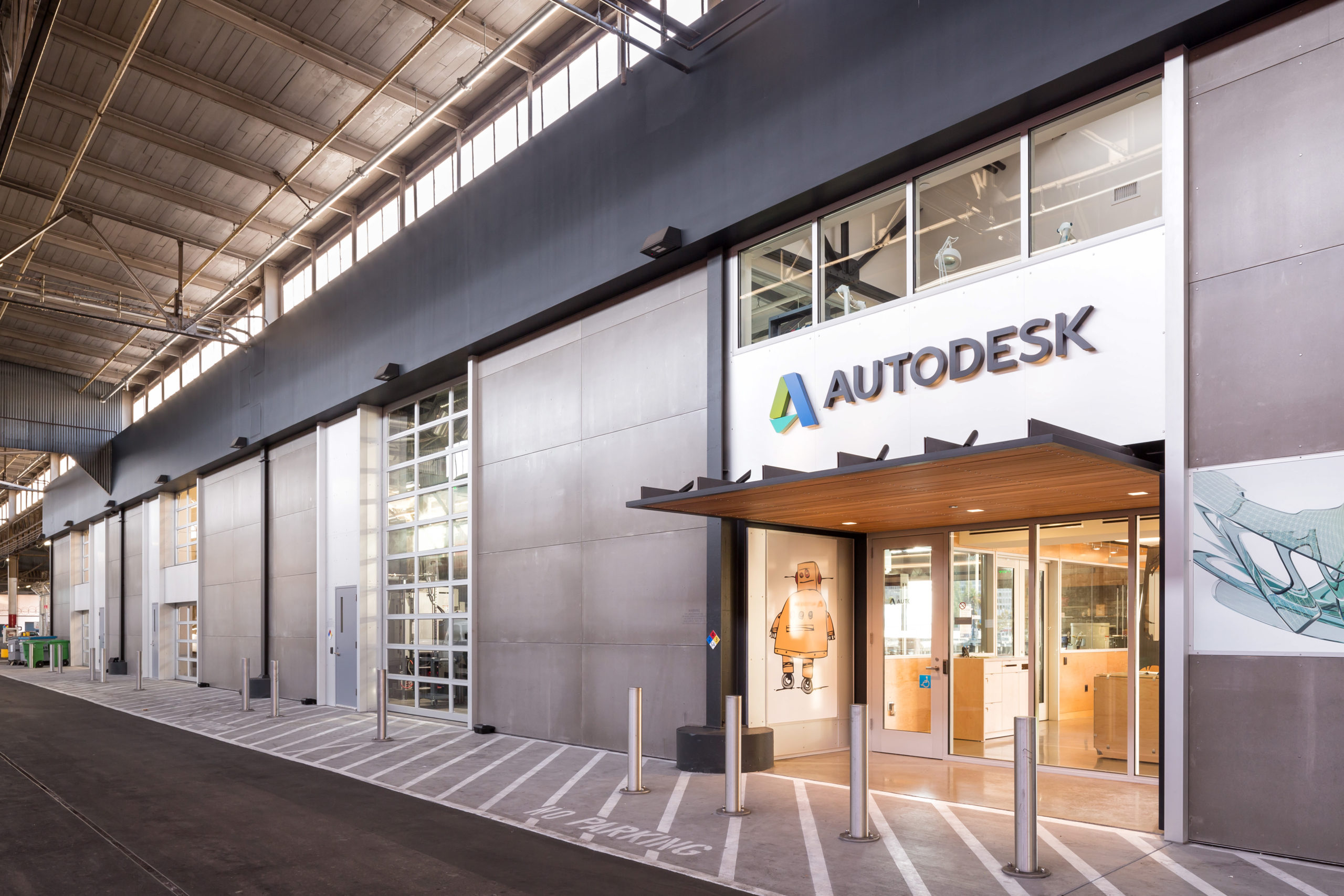
It’s tempting to say that the tech economy has destroyed all this history, but that would be an oversimplification. Pier 9 is still at the heart of San Francisco’s boom-then-bust economy, and it’s still a place where the tools and raw materials for local manufacturing are housed. Today those tools are more likely to be 3D printers, robots and computer-controlled CNC machines, but the raw materials are largely the same. Here, Autodesk’s cadre of makers and artists work a lot with old fashioned wood and metal — well, and with a few specialised polymers, too.
I’d been hearing about Autodesk’s facilities at Pier 9 for months, mostly from artists who have done residencies here. “They just let you play with high-end 3D printers!” one enthused to me. While plenty of companies have freewheeling R&D labs, Autodesk built this place around its purchase of maker mecca Instructables. The idea is to tap into the wisdom of creative early adopters and inventors, to help chart the company’s roadmap for future products. I could see the open-source innovation culture of the Instructables community everywhere I looked. Desks were covered in half-finished art projects, milled or printed in workshops down the hall, and walls were adorned with everything from 3D visualisations of crime statistics to foam reconstructions of Iron Man’s suit — its smooth curves milled entirely on a CNC machine.
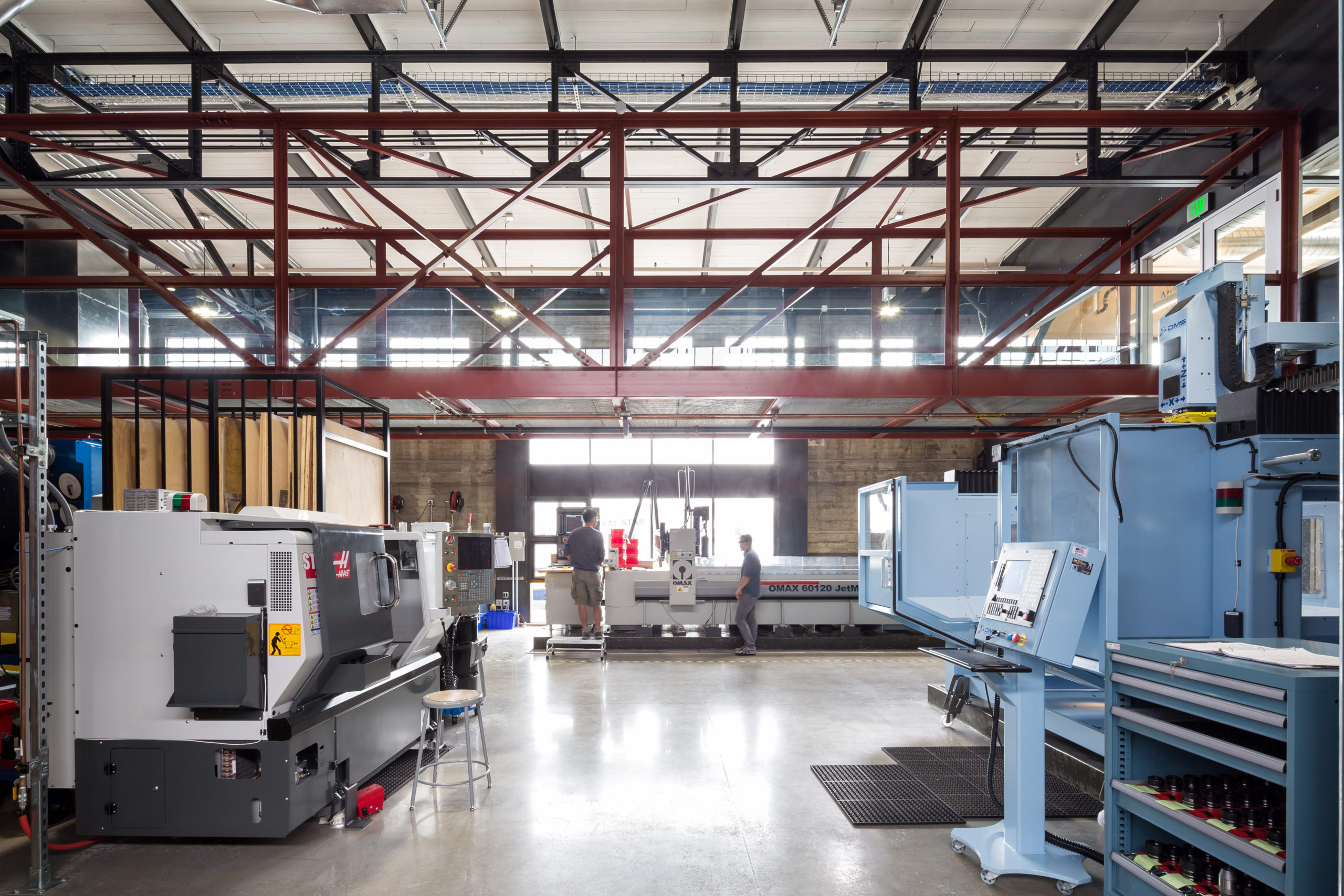
As my tour guide, Evan Atherton, took me through converted warehouses full of industrial equipment like water cutters the size of my living room, he explained that the ethos here is to make anything, and experiment as much as possible. The group’s mandate is, among other things, to figure out what workplaces of tomorrow will be like, as 3D printers become as common as copy machines, and humans work alongside robots on everything from heavy lifting to drawing blueprints. Anyone from Autodesk can use the workshops, but there are also a few groups whose jobs are located here.
Atherton’s colleague Heather Kerrick told me that just building out the space has taught them a lot. When they began setting up their robotics workshop, they discovered that OSHA’s workplace safety regulations for robots were harder to deal with than an 8 foot-tall robot arm. Though Autodesk wants to see how humans can work alongside robots, OSHA has mandates that suggest keeping all robots separated from humans with thick plexiglass. These are regulations written with things like industrial manufacturing in mind — not design firms or small toy-making companies. “We had to spend a lot of time just figuring out how to comply with these regulations,” Kerrick laughed. What she and her team are going through now is just a taste of what future companies will face as they bring more robots into offices and workshops.
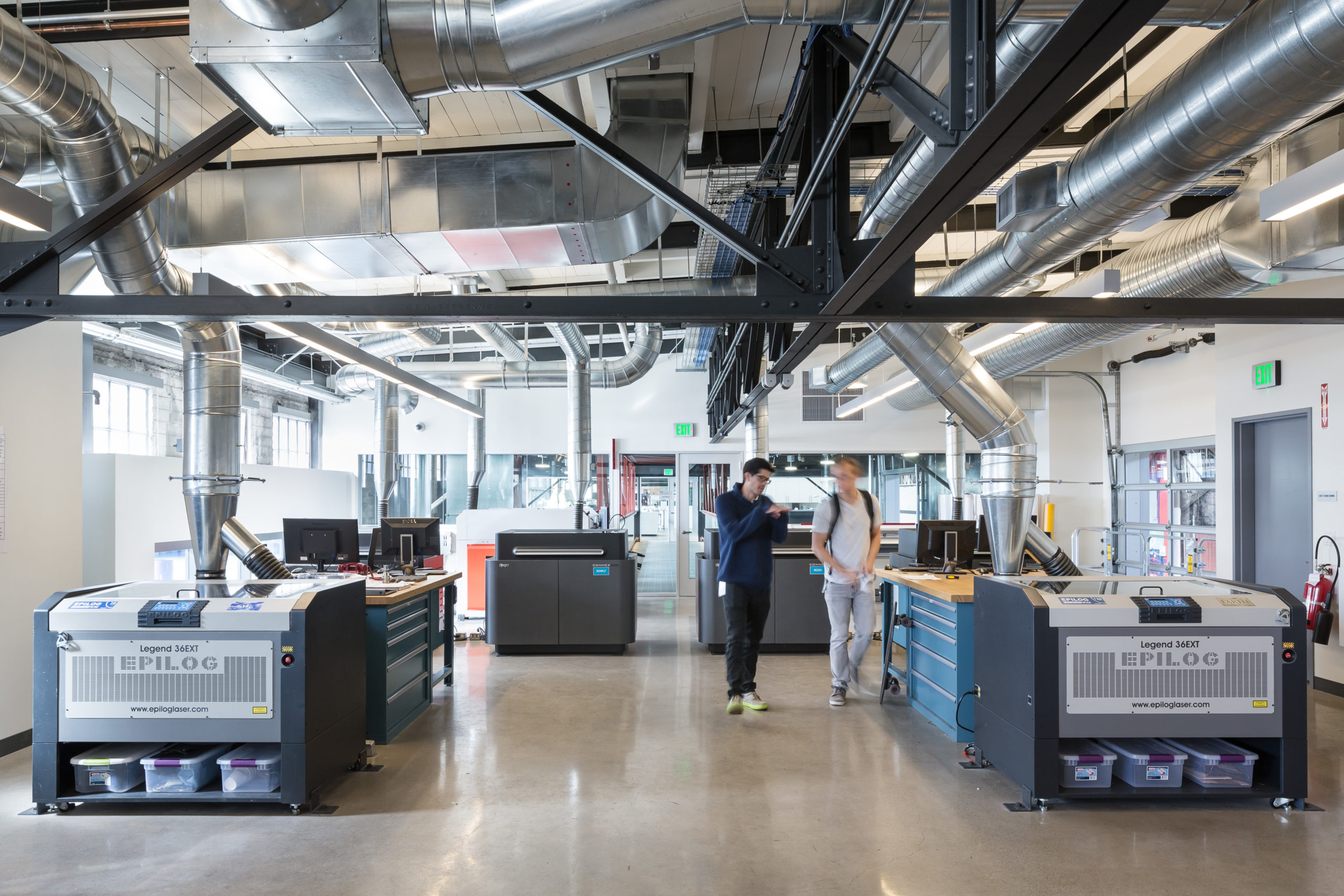
The artists are here because they always come up with use cases that Autodesk regulars would never think of in a million years. “What are you working on?” I ask Morehshin Allahyari, one of the residents. She’s staring intently at a sheaf of drawings next to a strange model of 3D printer I’ve never seen before. It looks almost like an old sewing machine. “Well, I’m doing an art project about oil, and global capitalism versus Jihad.” She points at the 3D printer. “I’m going to dissolve this 3D printer while it’s printing.” (Most 3D printer feedstocks are made with oil.) This means taking the printer apart to see which parts she can melt without shutting down the motor and printer mechanisms instantly.
Very few office workers will ever need to deconstruct the relationship between global capital and Jihad, but knowing how much abuse a 3D printer can take before it shuts down? That’s information Autodesk actually needs. And every artist here is coming up with projects whose execution will yield valuable data, from how easy it is to make lunar lander parts on a CNC machine to whether 3D printed records work with standard record players.
Atherton works on consumer-oriented projects at Autodesk, including an architectural challenge to design and manufacture a reconfigurable, walk-in pavilion over a three day period. But he’s also spent the last two years using the labs to build props for his first movie, a short homage to Star Wars called Artoo in Love.
Some of the R2 units you see in the movie were built by fans, but Atherton milled and printed almost all the parts for the pink R2 at Autodesk, in the labs I visited. He spiffed up R2’s mailbox sweetie here, and even printed out R2’s wine-serving arm when they needed the part quickly during filming. His movie is a perfect example of the spirit of the Autodesk labs, where employees are encouraged to use the equipment for personal projects as well as official work — and where the results are everything from weighty comments on the oil economy to lighthearted fan films.
In pretty much every office space or room I visited, somebody would inevitably point out the view from the windows. Outside, the Bay waters were gently ruffled by wind, and people walked by on the promenade. In the distance, I could see the clock tower on the Ferry Building, which was once eaten by a giant octopus in the 1950s monster movie It Came from Beneath the Sea. Cargo ships slipped by, on their way to the enormous container-lifting robots looming like AT-AT units from The Empire Strikes Back over the ports of San Francisco and Oakland. The whole place was like the set from a movie, beautiful beyond reason, suggesting an alternate world of clean air, friendly robots, and replicators. It’s easy to see why Autodesk chose to house its most experimental, future-looking teams here.
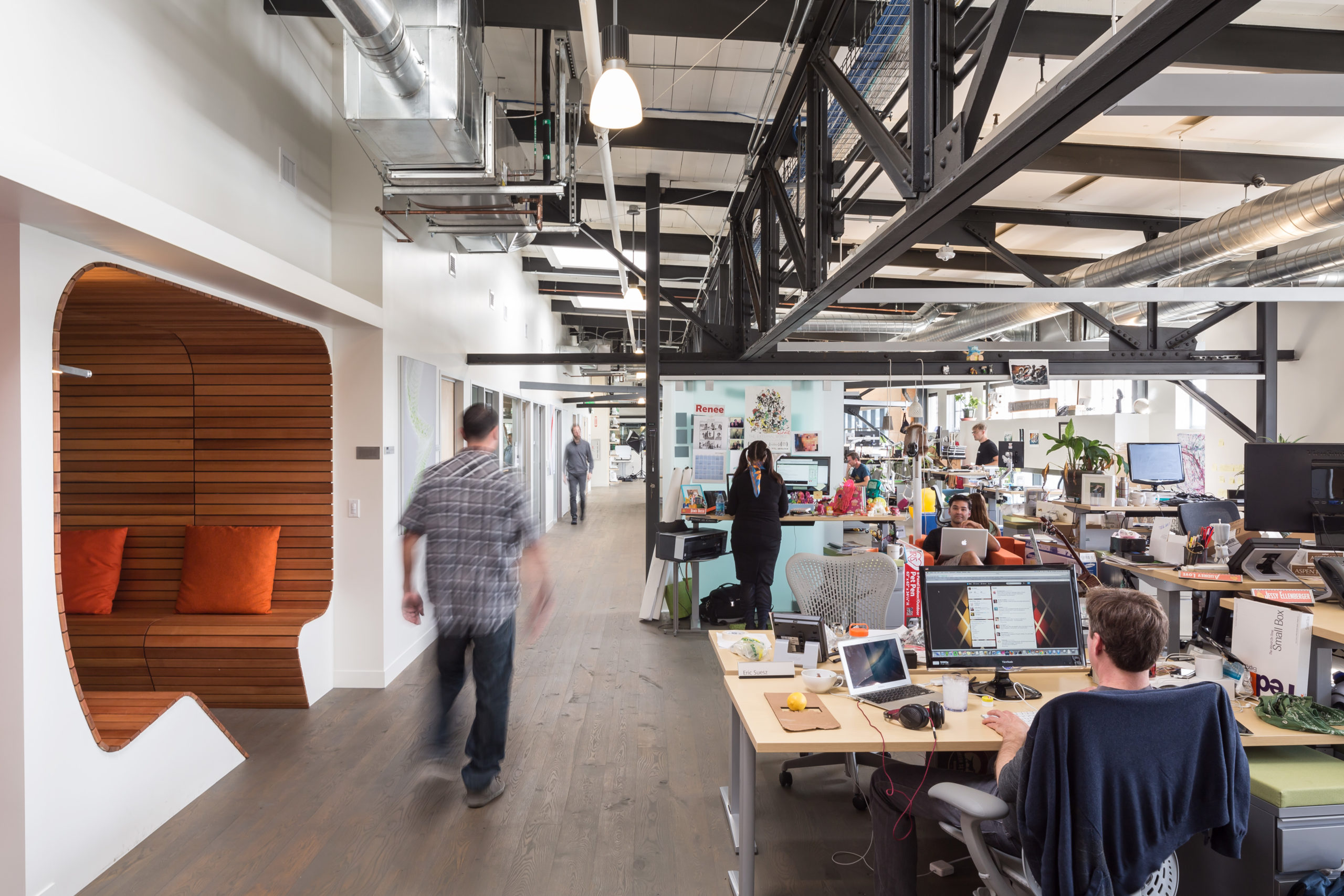
Of course the reality of where all this is leading may not be quite as lovely as the gardens of Alderaan, or even the park behind ILM where Atherton shot parts of Artoo in Love. Most of us will probably access 3D printers and sophisticated CNC machines at tomorrow’s version of Kinkos, as we rush to finish a presentation for work or school. All this fantastic potential will seem ordinary, and maybe our robot colleagues will be helping us to design deeper oil wells rather than green buildings. But today, while the tech is still nascent and Autodesk’s labs hum with the hopes of makers and artists, it’s always tempting to dream.
